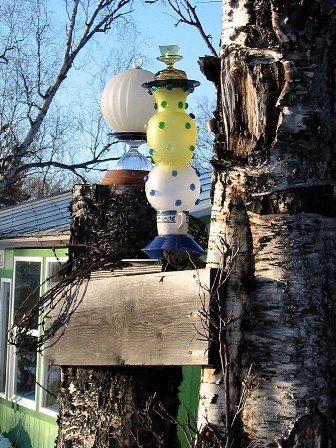 DD One
DD OneThe humble tulip is not humble. The first drawn tulip on record is a calligraphy character on an Italian bible dated 1100 AD. Since the 16th century tulips have been bred in
Tulips are really quite simple to grow, but have gained a stigma as hard to deal with. I think it’s because they are often planted in poor drainage, too deep or too close to the surface, or non-hardy varieties are planted. There are currently 15 classifications of tulips – from short to tall, wild to tame and hardy to fussy. I prefer to think of them in two categories – those that are hardy perennials, and those that are not. It makes things a whole lot easier.
 Hardy tulips that grow well here include some of the oldest varieties –
Hardy tulips that grow well here include some of the oldest varieties –
Running a close second for cause of failure is your best friend, Rover. Dogs love to dig up bulbs! They are delighted when you are thoughtful enough to spend hours on your hands and knees hiding little treasures for them to dig up, especially if you use the usual recommended dose of bone meal as you plant. “Hummm, something to dig that smells yummy – thanks Mom!”
This is not a warning that is to be taken lightly. A couple of years ago, five of us spent most of a day in a clients landscape putting in thousands of bulbs only to have a friendly, lovely creature follow us around digging them out - with us following her around putting them back in! Alas! After our departure they were all hers and the digging continued. In the end only a couple dozen bulbs emerged in spring, having managed to outwit the little darling. Please plan for this if you have four legged family members.
Planting tulips about five inches deep is perfect. This gives them winter protection, space to grow and allows for their tendency to ‘float’ nearer to the surface through winter freezes and thaws. If planted too shallow, this ‘floating’ will freeze out the bulbs or produce weak root structures and plants that do not stand up or develop well.
What about all those exotic looking tulips that grace the covers of magazines and are common in florist’s coolers? The bulk of these are in that second category I mentioned earlier, non-hardy plants that grow well in pots. This is really great news for us! Potted tulips are among the loveliest of deck décor for spring. Varieties suitable for containers include Lily Flowered, Fringed, Parrot, Peony Flowered, Water Lily Tulips, and the hard to find Greigii. These tulip groupings run from frilly to flared, green striped to mottled, double and triple petalled to single, undulating leaves to grass like ones. Planted in groupings of color, shape or texture, they are true head turners.
 To have successful potted tulips, buy bulbs now and store unplanted in sand at forty to forty five degrees until April. On April first, pull them out and plant in pots with good drainage using well drained soil. Keep moist and very cool. Growing forced (potted) bulbs in warm conditions will produce tall, nasty looking foliage of poor color. It also makes funky flowers that bloom through very quickly. I like to put them outside in a cold frame outdoors. This method makes a strong plant that blooms in mid to late May.
To have successful potted tulips, buy bulbs now and store unplanted in sand at forty to forty five degrees until April. On April first, pull them out and plant in pots with good drainage using well drained soil. Keep moist and very cool. Growing forced (potted) bulbs in warm conditions will produce tall, nasty looking foliage of poor color. It also makes funky flowers that bloom through very quickly. I like to put them outside in a cold frame outdoors. This method makes a strong plant that blooms in mid to late May.



1 comment:
Sally and Brooke,
Very interesting! I love tulips so I enjoyed the photos and all the information. Thanks.
I've just recently discovered your lovely blog and thought you'd like to know that I've recommended your blog for BlogDay - a little bit late since BlogDay was August 31st but better late than never!
Kind Regards,
Maureen
Post a Comment